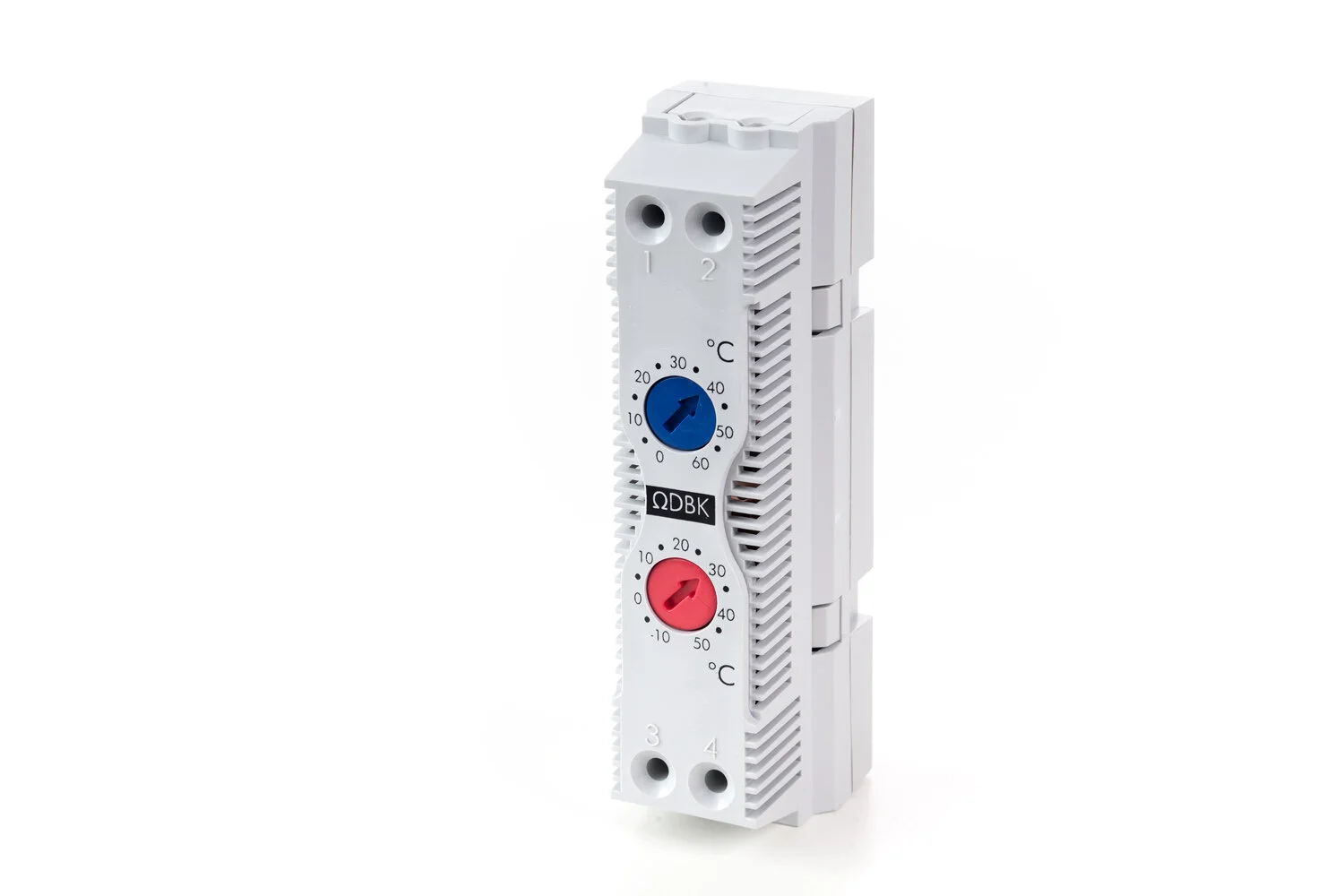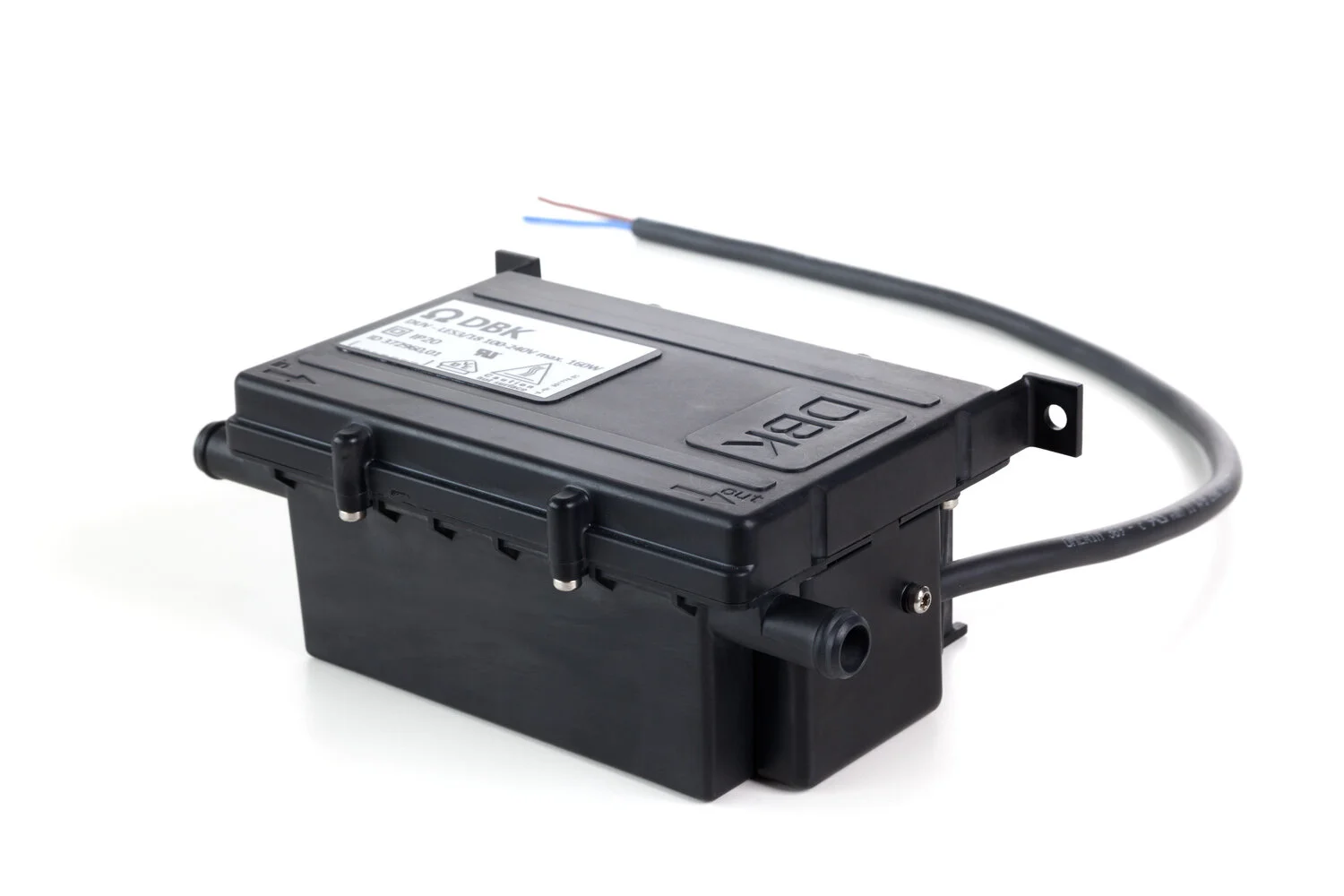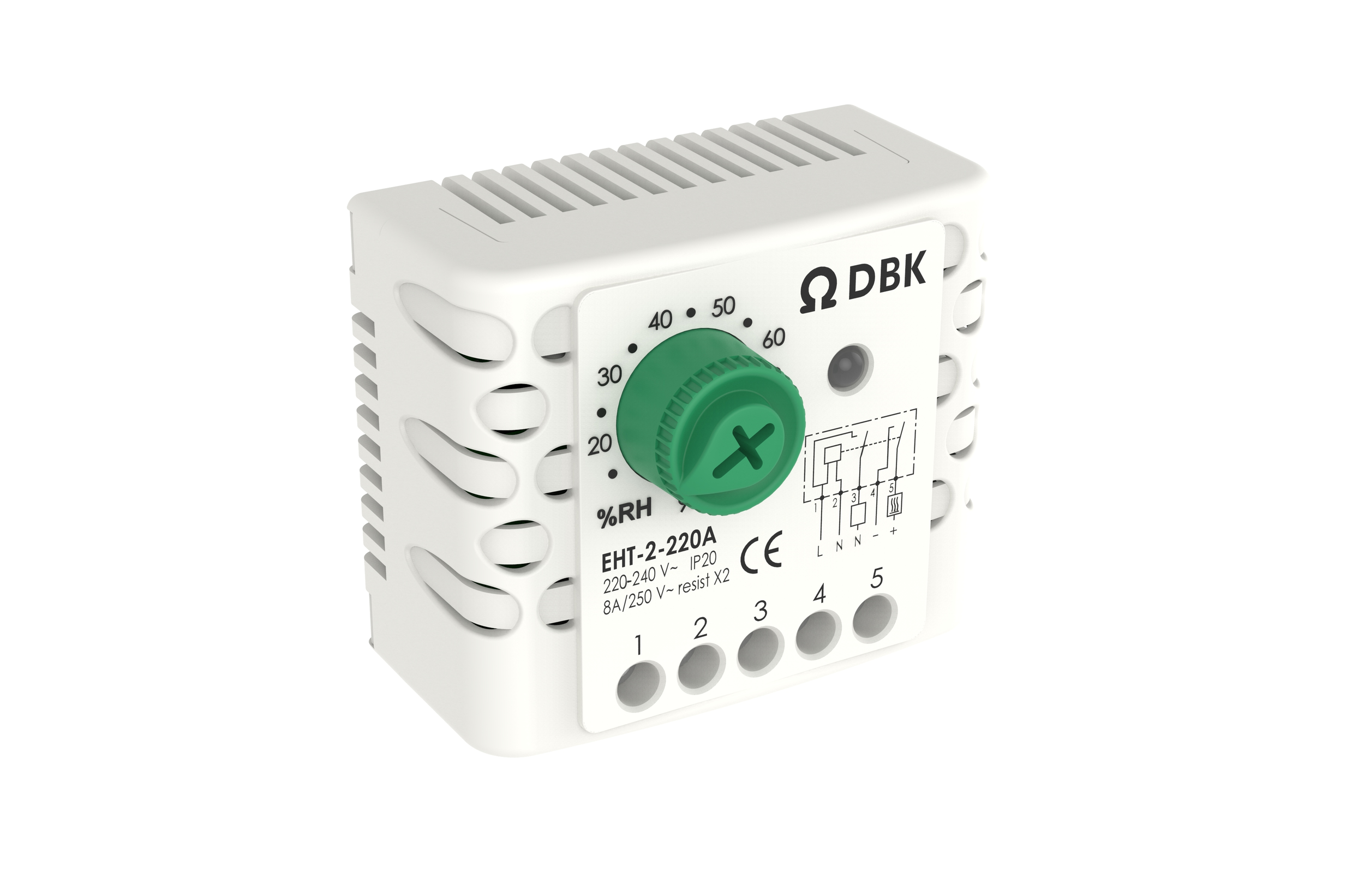What is the difference between a thermostat, a dualstat and an inline thermostat?
Thermostats and Dualstats feature an adjustable switching temperature and are suitable for mounting on DIN rails in housings. Inline thermostats cannot be adjusted, but are equipped with a thermostat featuring a pre-assembled switching temperature.
When do I need a thermostat or hygrostat?
Hygrostats can be used to control switch cabinet heating systems if a previously set relative humidity must not be exceeded. Thermostats are used as temperature controls in enclosures.
How does a thermostat work?
Bi-metal thermostats essentially consist of a temperature switch. The switch position is changed by a bi-metal strip inside, which opens or closes a contact depending on the previously set temperature.
How does a hygrostat work?
A hygrostat is a controller that reacts to the relative humidity in a switch cabinet and switches a mechanical contact according to the pre-set value via the linear expansion of a moisture-sensitive material pre-tensioned with the rotary control.
What does the term hysteresis stand for?
In control engineering, hysteresis describes a delayed change in action after a change in the cause and thus the difference between the switching on and off of a control valve or actuator.
How do I connect a contoller to a heating or cooling unit?
Mechanical thermostats are connected upstream of the unit and connected to phase (L).
What does "normally closed" and "normally open" stand for in a thermostat?
These are two types of contacts. The normally closed contact is closed in the resting state. It interrupts an electric circuit when it is actuated. The normally open contact is open in the rest state. It closes the contact when it is actuated.
What is a Condensate Evaporator?
A PTC Condensate Evaporator is a compact, encapsulated system with an integrated condensate collection tank for automatic collection and evaporation of condensate in enclosures & electrical cabinets. An electronic condensate evaporator uses PTC Heating Technology for reliability, and low power consumption removing condensation inside air-condition cabinets and refrigerators. The evaporator includes inlet and outlet ports for condensate such that no draining of the accumulated water is necessary. PTC Condensate Evaporators are available in three power versions from 135W to 200W, suitable for a voltage of 110V or 230V.
What is the advantage of a Condensate Evaporator over a Drain Pan?
Condensation collected inside a sealed electrical enclosure needs to be removed. It can be drained from a cabinet as collected, but that often isn’t feasible. The drain pan must be emptied periodically or connected via a hose to the outside. This leaves the enclosure vulnerable to more moisture from the outside environment and can be unreliable. A PTC Evaporator uses a heating device to evaporate the water and ejects the steam created outside the cabinet. Moisture can’t come into the cabinet, and there is no need to drain the collection container.
How does a PTC Condensate Evaporator work?
A PTC Condensate Evaporator is an automatic, universal system with enclosed housing and integrated tank. Depending on the application, the evaporator is permanently or periodically under voltage. In the so-called dry run mode (without liquid), the PTC heater only produces a low heat output. As soon as condensate enters the collection tank, heat is extracted from the aluminum profile of the PTC heater which increases its power and automatically starts the evaporation process. The steam is removed to the outside via the steam outlet.
Can I operate a PTC Condensate Evaporator at a wide voltage range? What are the consequences?
Yes. The PTC Condensate Evaporator can be operated worldwide at 100 - 240 V with almost constant evaporation capacity.
Which factors must be considered when connecting a PTC Condensate Evaporator?
The PTC Condensate Evaporator features protection class II, which is why only N and L need to be connected electrically. When connecting the hose to the condensate inlet and the steam outlet, the dimensions in the description must be observed.
What are typical applications of PTC Condensate Evaporators?
The PTC Condensate Evaporator is suitable for evaporating demineralized water from refrigerators, air conditioners and similar devices. It can be used in all applications where condensate is produced and must be removed.
Typical applications are: Electronic enclosures, Control Cabinets, Refrigerated Counters, Freezers, Industrial Air Conditioning Units, and many more.




